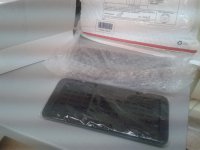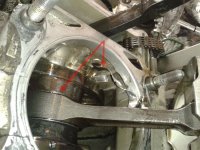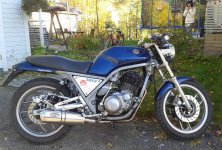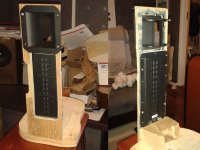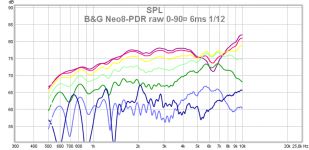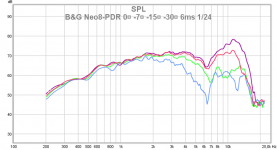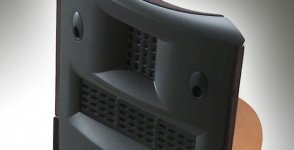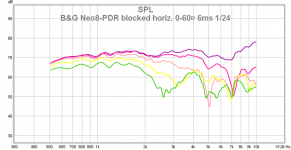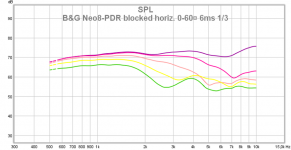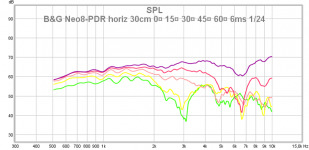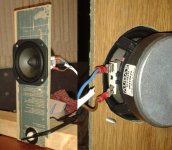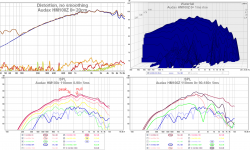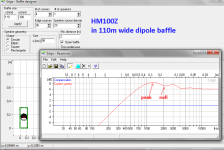🙂 I got a pair of Neo8-PDR's today! Now I will do a test baffle and perform directivity measurements soon!
Another project I am working and spending money is my -86 Yamaha SRX-6. It has a tuned engine and now the lower rod bearing broke and spoiled the piston and camshaft bearings too. Well, I will send a new (recycled) head to be port tuned... matches well with the overbore high-comp piston, tuned cam, flat-slide Mikunis and the open pipe 😎 Cost of engine repair will be some 1000€
Another project I am working and spending money is my -86 Yamaha SRX-6. It has a tuned engine and now the lower rod bearing broke and spoiled the piston and camshaft bearings too. Well, I will send a new (recycled) head to be port tuned... matches well with the overbore high-comp piston, tuned cam, flat-slide Mikunis and the open pipe 😎 Cost of engine repair will be some 1000€
Attachments
You seem to be tuning your new toy at the exact spot you were tuning your speakers a few months ago 🙂)
Look forward to hearing your first impressions on the Neo8.
Look forward to hearing your first impressions on the Neo8.
Yep, the Yammy has breathing problems at 5000-8000rpm, Torque is just fine but hp stops rising with revs. Head port tuning should help. I wont do it myself - a guru lives in a nearby town, he has flow bench etc. He has done the head job for many of the fastest bikes and cars around here and Europe, including some 1000hp turbo-BMWs!
Juha,
Since there is already the need for the protective cap on CD3.5H,
do you think we could have a passive CO between Neo8 and CD3.5H?
Since there is already the need for the protective cap on CD3.5H,
do you think we could have a passive CO between Neo8 and CD3.5H?
Yes, I think it would be quite easy task if Neo8 doesn't need much eq. The response measurements that I have seen are not consistent and not very pretty. We will see...
I played a little music (full range) through Neo8-pdr and it is kind of strange to see and hear that thing. When handheld and turned around the response drops off very effectively when offset. I think it behaves very different than a handheld cone driver. Open planar vs. open cone - two worlds!
I've owned the SRX-6 for four years and the engine has been split twice before this! Some more tuning every time... Much more expensive hobby than speaker building!
I played a little music (full range) through Neo8-pdr and it is kind of strange to see and hear that thing. When handheld and turned around the response drops off very effectively when offset. I think it behaves very different than a handheld cone driver. Open planar vs. open cone - two worlds!
I've owned the SRX-6 for four years and the engine has been split twice before this! Some more tuning every time... Much more expensive hobby than speaker building!
Last edited:
Oh yes; Mine is on a wide baffle, cardioid. So no EQ needed (I hope).
If you are going nude again, yours will need some EQ (depending on where you cross).
If you are going nude again, yours will need some EQ (depending on where you cross).
I love nudity😛 No fairings on my bike either!
Here are measurements of a nude B&G Neo8-PDR in a 100mm wide test baffle
Notice! All measurements indoors, 50cm distance, 6ms gating
- 0¤ shows the dipole null at 6kHz (not so clear offset
- horizontal directivity very even 200Hz-4000Hz (no strange deviations at 2kHz!)
- vertical shows typical recuction of highs (radiating area w=35mm h=140mm
- raggedness of 60¤ and 90¤ measurements come from the walls of this small speaker lab. Perhaps some raggedness is cause by the test baffle's unsmoothed edges.
Comfort zone as dipole is wide, easily LR4 at 700Hz and 4-5kHz, extremely well behaved directivity!
Now -lets do nice baffles from acrylic plate! Neo8 needs a protective capasitor too, some 100-200uF?
ps. Someone might ask Why not use Neo3-PDR as tweeter. Answer is that I don't want so hear it's dipole null at 13kH. NeoCD3.5H has wonderful performance and room response and I don't miss late reflections above 5kHz (if there would be any)
Here are measurements of a nude B&G Neo8-PDR in a 100mm wide test baffle
Notice! All measurements indoors, 50cm distance, 6ms gating
- 0¤ shows the dipole null at 6kHz (not so clear offset
- horizontal directivity very even 200Hz-4000Hz (no strange deviations at 2kHz!)
- vertical shows typical recuction of highs (radiating area w=35mm h=140mm
- raggedness of 60¤ and 90¤ measurements come from the walls of this small speaker lab. Perhaps some raggedness is cause by the test baffle's unsmoothed edges.
Comfort zone as dipole is wide, easily LR4 at 700Hz and 4-5kHz, extremely well behaved directivity!
Now -lets do nice baffles from acrylic plate! Neo8 needs a protective capasitor too, some 100-200uF?
ps. Someone might ask Why not use Neo3-PDR as tweeter. Answer is that I don't want so hear it's dipole null at 13kH. NeoCD3.5H has wonderful performance and room response and I don't miss late reflections above 5kHz (if there would be any)
Attachments
Last edited:
Thanks for sharing Juha; that is great information.
Before going ahead with the final built,
would you mind checking the response with Neo8 lying horizontally?
I think with a 3000-3200ish crossover point,
that configuration should also work very well.
Advantage: more compact driver placement vertically.
Martin Logan uses it that way in their Mosaic speaker (see pic) and their crossover is at 3000hz.
Before going ahead with the final built,
would you mind checking the response with Neo8 lying horizontally?
I think with a 3000-3200ish crossover point,
that configuration should also work very well.
Advantage: more compact driver placement vertically.
Martin Logan uses it that way in their Mosaic speaker (see pic) and their crossover is at 3000hz.
Attachments
BTW; why did you order the PDR?
Your tweeter has a horn/waveguide, the non-PDR should also work.
I don't know how the PDR treatment will affect the horizontal placement.
Your tweeter has a horn/waveguide, the non-PDR should also work.
I don't know how the PDR treatment will affect the horizontal placement.
The King idea of AINOgradient is to have dipole midrange. It is true dipole from 150Hz to 3-4kHz. I have many good boxed speakers and now I want something different - functionally and esthetically
Neo8-PDR directivity 0-60¤, rear wave blocked, placed horizontally.
Measured indoor at 30cm, 6ms gating
- driver membrane w=140mm, h=35mm
- directivity is similar to cone speakers with d=140mm 6" nominal
- directivity starting at 2,5kHz
My daughter Aino made miniature AINOgradients for her dollhouse! I had the priviledge of helping a little. Not painted yet 🙂 Notice toe-in but placed too close to walls!
Neo8-PDR directivity 0-60¤, rear wave blocked, placed horizontally.
Measured indoor at 30cm, 6ms gating
- driver membrane w=140mm, h=35mm
- directivity is similar to cone speakers with d=140mm 6" nominal
- directivity starting at 2,5kHz
My daughter Aino made miniature AINOgradients for her dollhouse! I had the priviledge of helping a little. Not painted yet 🙂 Notice toe-in but placed too close to walls!
Attachments
Last edited:
The King idea of AINOgradient is to have dipole midrange. It is true dipole from 150Hz to 3-4kHz. I have many good boxed speakers and now I want something different - functionally and esthetically
Neo8-PDR directivity 0-60¤, rear wave blocked, placed horizontally.
Measured indoor at 30cm, 6ms gating
- driver membrane w=140mm, h=35mm
- directivity is similar to cone speakers with d=140mm 6" nominal
- directivity starting at 2,5kHz
My daughter Aino made miniature AINOgradients for her dollhouse! I had the priviledge of helping a little. Not painted yet 🙂 Notice toe-in but placed too close to walls!
Nice polars for being too close to the walls. Was that measured at 30mm or 50mm? 😀
Last edited:
Sorry 😛, perhaps I could install cell-phone drivers to dollhouse speakers!
but these Neo8 measurements were done indoors in a 3x4m room. The driver was on a stand in the middle of the room. Microphone distance 30cm (12") or 50cm (20")to driver membrane, at midpoint level (height). The stand/driver was then roteted on a turntable to measure off-axis.
but these Neo8 measurements were done indoors in a 3x4m room. The driver was on a stand in the middle of the room. Microphone distance 30cm (12") or 50cm (20")to driver membrane, at midpoint level (height). The stand/driver was then roteted on a turntable to measure off-axis.
Last edited:
I don't think placing the neo8 horizontally will affect its altogether dipole behavior.
As lond as it is nude, summed effect should be same, no?
As I said earlier; horizontal has the benefit of more compact driver placement.
As lond as it is nude, summed effect should be same, no?
As I said earlier; horizontal has the benefit of more compact driver placement.
I measured dipole response too with driver horizontally. I don't like it.
I think it is less evil to have a bit too much c-c which affects mostly vertical response. I will use LR4 or LR8 xo. It is common practise to priorize horizontal response, and for a reason! Just think what 10¤ horizontally vs. vertically means at your listening spot. Power response-wise there is not a big difference.
I think it is less evil to have a bit too much c-c which affects mostly vertical response. I will use LR4 or LR8 xo. It is common practise to priorize horizontal response, and for a reason! Just think what 10¤ horizontally vs. vertically means at your listening spot. Power response-wise there is not a big difference.
Attachments
Last edited:
Well;
You are measuring the horizontal and vertical response individually.
However your ears (brain) will hear the sum.
I would say, give a critical listen to both configurations.
You might also try the Neo8 on top of the tweeter. Neo8 does not seem to like any obstructions to the air flow around it. I try to keep it away from any clutter.
You are measuring the horizontal and vertical response individually.
However your ears (brain) will hear the sum.
I would say, give a critical listen to both configurations.
You might also try the Neo8 on top of the tweeter. Neo8 does not seem to like any obstructions to the air flow around it. I try to keep it away from any clutter.
A long waited package arrived, but the train has gone already...
Audax HM100Z0 indoor measurements in 110mm wide dipole baffle
The magnet is huge and the driver opening needs wide chamfering in a normal speaker baffle. The test baffle is 8mm thick floor laminate board.
Notice
- low distortion but not comparable to my earlier measurements
- good csd but driver ringing at 6kHz - also peaking response
- dipole baffle spl shows very shallow dipole null, despite 180¤ response is surprisingly good
- in 110mm wide baffle dipole peak at 1800Hz, null at 2300Hz
I will use Neo8 for AINOs, this Audax would be super for a high-eff 3-way... NeoCD3.5H as T, 2x 8" or 10" basses sealed, something like Jon Marsh's Isiris http://www.htguide.com/forum/showth...l-Design-Study&p=571771&viewfull=1#post571771
Audax HM100Z0 indoor measurements in 110mm wide dipole baffle
The magnet is huge and the driver opening needs wide chamfering in a normal speaker baffle. The test baffle is 8mm thick floor laminate board.
Notice
- low distortion but not comparable to my earlier measurements
- good csd but driver ringing at 6kHz - also peaking response
- dipole baffle spl shows very shallow dipole null, despite 180¤ response is surprisingly good
- in 110mm wide baffle dipole peak at 1800Hz, null at 2300Hz
I will use Neo8 for AINOs, this Audax would be super for a high-eff 3-way... NeoCD3.5H as T, 2x 8" or 10" basses sealed, something like Jon Marsh's Isiris http://www.htguide.com/forum/showth...l-Design-Study&p=571771&viewfull=1#post571771
Attachments
Last edited:
How about mounting the driver from the back and measuring again? Or at least chamfering the back side of the driver opening?
I measured small drivers that made a big difference between front and rear mounting.
Rudolf
I measured small drivers that made a big difference between front and rear mounting.
Rudolf
I would believe that an 11 cm wide baffle should have dipole peak around 3140 hz and not 1900 hz. A 1900 hz peak should indicate a baffle of ca 18 cm?
(I am not disputing the measurements, just pointing out that I do not understand) 🙂
(I am not disputing the measurements, just pointing out that I do not understand) 🙂
Here is Edge sim of the same. To me it looks like that the magnet makes so much harm to the backwave at these frequencies, that dipole behaviour is not really working. I originally used Vifa NE95 very much because of their small neo magnet and very light aluminium cone.
The test baffle is only 8mm thick, chamfering it would not help at all, please magnify the picture to see! But the wire connector makes an obstruction. I will mount it differently and measure again. In the graph 180¤ line is black, we can see that it drops sharply after 3kHz. 120¤ shows best dipole null! With all my cone drivers I get best dipole null at 105 -120¤.
The test baffle is only 8mm thick, chamfering it would not help at all, please magnify the picture to see! But the wire connector makes an obstruction. I will mount it differently and measure again. In the graph 180¤ line is black, we can see that it drops sharply after 3kHz. 120¤ shows best dipole null! With all my cone drivers I get best dipole null at 105 -120¤.
Attachments
Last edited:
- Home
- Loudspeakers
- Multi-Way
- Aino gradient - a collaborative speaker project
